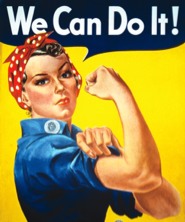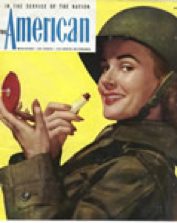Sign up for FlowVella
Sign up with FacebookAlready have an account? Sign in now
By registering you are agreeing to our
Terms of Service
Loading Flow



WHAT WE'RE ABOUT
Women and the War Effort





Rosie the Riveter was a US propaganda campaign. Based in part on real-life munitions workers, it was one of the most successful recruitment tools in American history and most iconic image of working women during WWII.

Women had many people working against them however. They were excluded from workplace unions and as the war wound down women were cut from the workplace as public policy and rhetoric reversed support. Although many women wanted to keep their jobs, they were fired and replaced by men coming home from war.

Areas where women worked: Women’s Army Auxiliary Corps (WAACs, later renamed the Women’s Army Corps), the Navy Women’s Reserve (WAVES), the Marine Corps Women’s Reserve, the Coast Guard Women’s Reserve (SPARS), the Women Airforce Service Pilots (WASPS), the Army Nurses Corps, and the Navy Nurse Corps
As men left for war, the responsibilities of women doubled as they had to continue their duties at home and take over the jobs that men left behind as they went to war. Congress introduced the first section of the army for women in May 1942.